
DISCLOSURE: This post may contain affiliate links, meaning when you click the links and make a purchase, I receive a commission. As an Amazon Associate I earn from qualifying purchases.
Do you like spicy food or Japanese or Chinese cuisine? In any case, you should know how essential hot chili oil is for many dishes.
It is often the primary base used for Italian, Korean, and Chinese cuisine, and is widely preferred due to the heat and spiciness. Because of its versatility, this oil is an excellent choice.
The hot chili oil can be used as a cooking base for meat or vegetables. If you can’t handle spicy rolls, you can use it as a dip too.
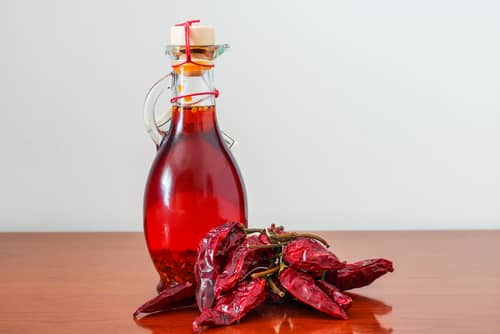
Whether you buy it from your local nearby store or prepare it at home, there can be instances where you run out of it. Thankfully, there are other alternatives available if you are looking for a viable substitute for hot chili oil.
The hot chili oil is made from chili pepper and red pepper flakes. The chili transfers its spicy nature to the oil when mixed and heated with the hot vegetable oil.
Next to using the chili oil for stir-frying, you can also use it as a marinade for chicken and shrimp. The chili flakes usually add a smokey flavor during grilling.
This oil is not limited to Chinese cuisine or Asian cuisines; salsa macha is a Mexican chili oil that is ideal for dipping tortilla chips and is similar in texture to hot chili oil.
As you can see, it’s quite versatile. You can enhance its flavor with herbs and serve it over scrambled eggs too.
Hot Chili Oil Substitutes
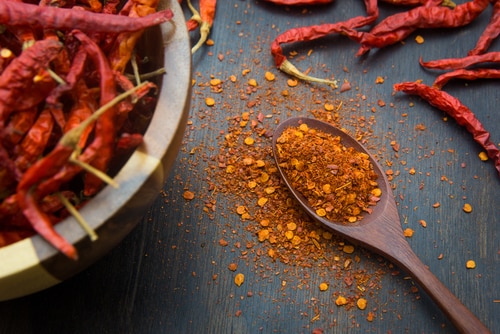
While chili oil is hard to beat when it comes to versatility, you can achieve a similar taste with peanut oil and cayenne pepper.
Both flavor profiles don’t exactly sync up, but it does offer the same spicy flavor. It will add the necessary kick to your dish.
2. Chili Garlic Oil
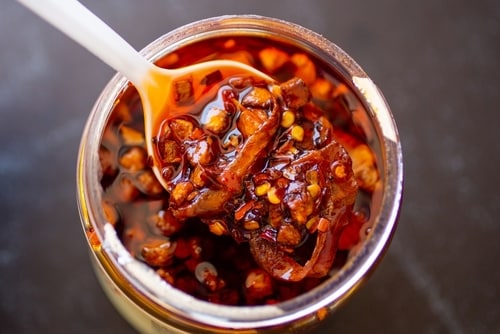
Consider making chili garlic oil if you want your dishes to appear restaurant-worthy.
This simple recipe may appear complicated at first, but you can follow it easily and it only takes 15-20 minutes. Chili powder and garlic enhance the spiciness of your food.
The type of oil you use determines the outcome of the dish. Therefore, pick an oil that is neutral, such as avocado or grapeseed. These oils do not compete in taste with the other ingredients.
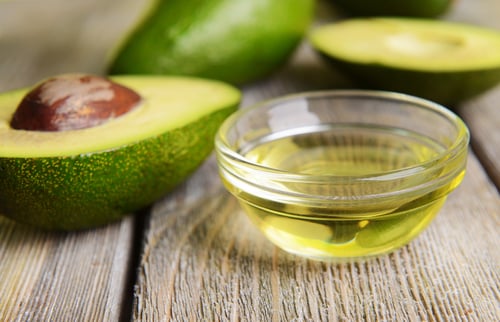
This recipe calls for chilies (any kind will do, but Thai ones work best), garlic, any neutral oil, salt, vinegar, and sugar to adjust the flavor.
For the chili and garlic flavor to be infused properly into the oil, blend the mixture for 10 minutes, then stir fry until the mixture turns into a red paste.
The oil must be mixed properly to place the chilis and garlic into the oil. The oil will turn red as it heats up. Be sure not to burn the ingredients, as this will kill the desired taste.
If you prefer only a mild taste, only use the oil.
3. Sweet Chili Sauce
This sauce complements Thai and Asian cuisines by combining spiciness with sweetness and savory notes.
You can use this sauce as a substitute for hot chili oil because chili oil is used for dipping. You can use this sauce as a substitute for dipping.
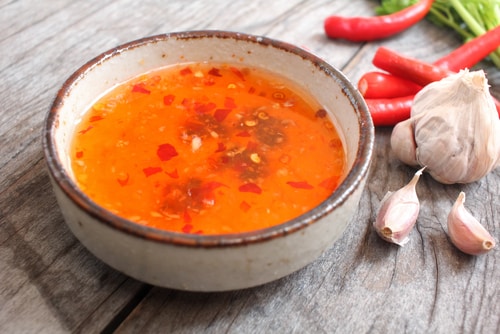
Although you can buy them from grocery stores, we would recommend you make some at home. It is a healthy alternative and you can also make it in large quantities to use later on.
It’s easy to make with basic ingredients including vinegar, garlic, red chili paste or chili flakes, garlic, lime, and sugar.
You can substitute sugar for honey or brown rice syrup. Combine them in a blender and your sauce is ready!
4. Homemade Chili Oil
Did your chili oil jar stock run out? No problem! Use a simple homemade recipe to replace it. However, make sure to use the right oil like rapeseed or sunflower.
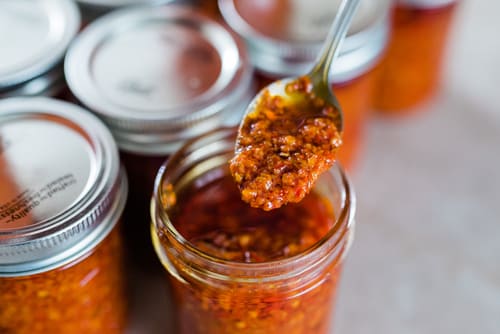
Furthermore, the temperature of the oil should be hot enough to toast the spices and other ingredients but not burn them.
The matchless taste and versatility of chili oil make it hard to find a suitable alternative. However, you can try other recipes we have listed above. Homemade recipes become handy when you cannot rush to the market.
These recipes hardly take 15 minutes to cook. You can cook and refrigerate them beforehand too. Hence, it’s not very difficult to substitute homemade chili oil and get something different in the mix.
Similarly, you can also make chili paste at home. All you need is to combine a few chili peppers, a bit of garlic, and fresh onion together. Chop them carefully or throw them in a food processor.
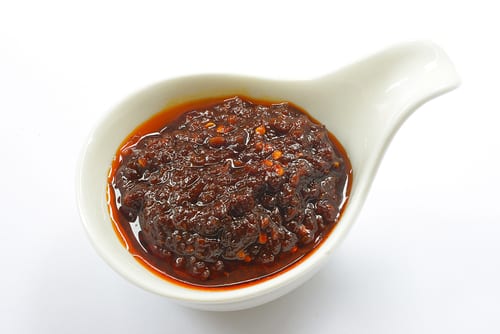
The good thing here is that you can also add as many other vegetables as you want to the mix.
Then, just add a bit of olive oil to the pot, and then place the mixture of vegetables you just chopped into the oil. Heat it on low heat, and let it cook for around 20 minutes.
As you are heating and cooking the mixture, stir it regularly.
To prevent the mixture from drying out, it’s imperative that you add a bit of olive oil every now and then.
Remember, the key is to not burn the paste as it mixes in carefully. You can also add any more seasonings as you prefer and cook it for five more minutes.
Once you’re done, just transfer the newly created paste into a jar. Remember to use a tight container and let the paste cool slightly. Don’t put it in the fridge right away; it’s always a wise idea to let it cool a bit before you refrigerate the oil.
5. Heat Chilies in Oil
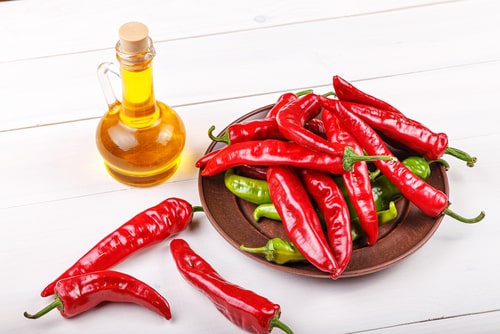
You can simmer fresh chilies, such as Szechuan or jalapenos, in hot oil for approximately 30 minutes, then separate the oil and use the spicy, red oil as a substitute.
Stir-frying the chilies for a few minutes in hot oil can create heat and spice as well if you use an oil with a higher boiling point.
Obviously, this won’t be a paste, but a rather oily mixture, so it might not be as versatile or useful in many dishes.
6. Dried Peppers
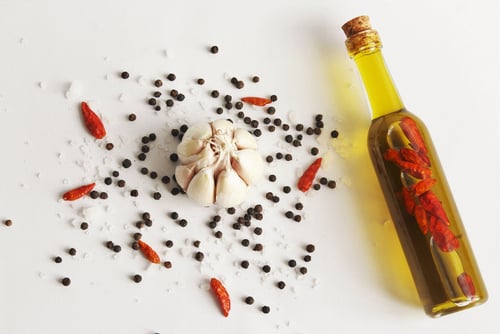
Place dried chili peppers in a bottle of oil with a shelf life of at least a year as a stand-in for chili oil. You must infuse this oil for at least a month before the peppers fully release their flavors.
Use only completely dehydrated peppers for this method. When oil is made with ripe or undried peppers, a bacteria called Clostridium botulinum can form in the oil. This can lead to serious food poisoning as well.
7. Crushed Red Peppers
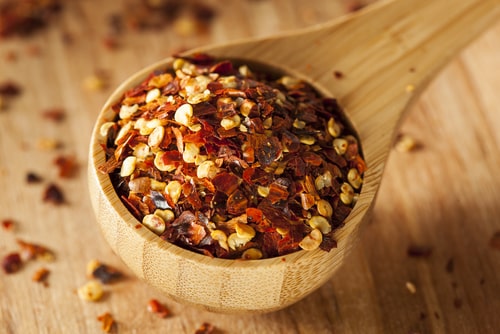
Making a simple chili oil by heating a teaspoon of crushed red pepper with about a quarter cup of oil is one of the easiest ways to make chili oil.
Simmer the mixture on low heat for about ten minutes. Strain the mixture and then get rid of the seeds and flakes.
The ingredients for this substitution are likely to be found in your pantry, so you can easily make it whether you enjoy eating out or cooking regularly.
Whether you cook with it or serve it on its own, chili oil is a simple and delicious condiment that you can use to add a touch of spice and flavor to nearly any dish.
By using these hot chili oil substitutes, you can get very nearly the same taste as chili oil and serve it with your favorite dishes with relative ease.
Since you can adjust how spicy it is and what extra flavors you add, you gain greater control over the taste of the dish.


